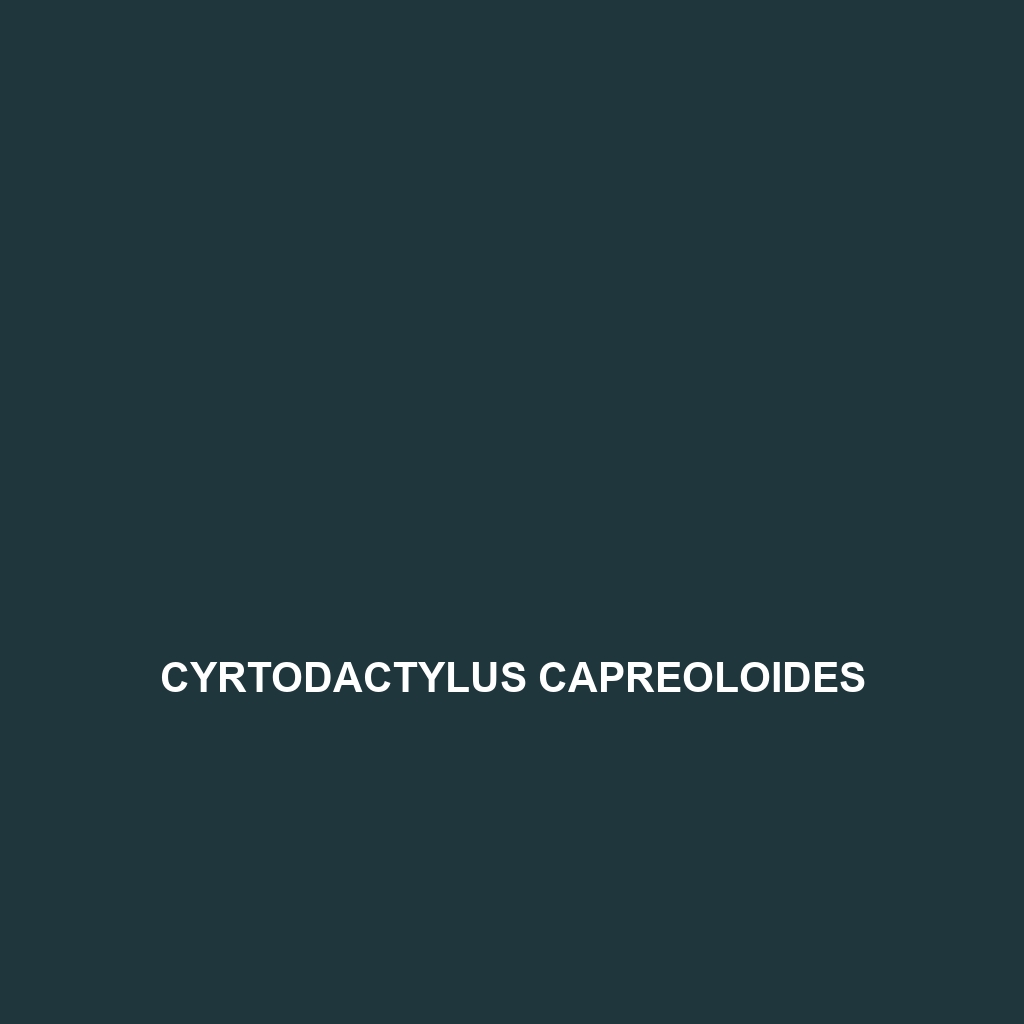Cyrtodactylus capreoloides (Common Name)
Common Name: Cyrtodactylus capreoloides
Scientific Name: Cyrtodactylus capreoloides
Habitat
Cyrtodactylus capreoloides, commonly known as the capreoloid gecko, is primarily found in the tropical and subtropical regions of Southeast Asia, specifically in countries like Malaysia, Thailand, and Indonesia. This species thrives in humid environments, often inhabiting dense forests, rocky outcrops, and sometimes coastal areas where it can find shelter in crevices and under loose stones.
Physical Characteristics
This gecko species typically reaches a size of 10 to 15 centimeters in total length. Its body is generally elongated and flattened, which helps it maneuver through its rocky habitat. Cyrtodactylus capreoloides is characterized by a distinct coloration that ranges from light brown to olive green, often with darker mottled patterns that provide excellent camouflage against its surroundings. Its large, bulging eyes and finely granular skin contribute to its unique appearance, making it an interesting subject for study.
Behavior
Cyrtodactylus capreoloides exhibits nocturnal behavior, meaning it is primarily active at night. During this time, it engages in various activities such as foraging for food and mating. The species is known for its agility, using its specialized toe pads to climb vertical surfaces and navigate through its natural habitat effortlessly. Interestingly, this gecko often displays territorial behavior, especially during mating seasons, where males will engage in displays to ward off rivals.
Diet
This species primarily feeds on insects and other small invertebrates, including crickets, beetles, and worms. Its feeding habits revolve around nocturnal hunting, where Cyrtodactylus capreoloides uses its keen eyesight to detect prey in low light conditions. These geckos play a vital role in controlling insect populations in their ecosystem.
Reproduction
Cyrtodactylus capreoloides typically breeds during the wet season, which allows for optimal conditions for the development of its eggs. This species is oviparous, laying two eggs per clutch, which are generally deposited in hidden locations such as crevices or under leaf litter. After an incubation period of about 60 to 70 days, the hatchlings emerge, fully developed and ready to fend for themselves.
Conservation Status
According to the International Union for Conservation of Nature (IUCN), Cyrtodactylus capreoloides is currently classified as vulnerable. Habitat loss due to deforestation and urban development poses significant threats to its survival. Conservation efforts are essential to protect this species and its natural habitat.
Interesting Facts
One fascinating aspect of Cyrtodactylus capreoloides is its incredible climbing ability, facilitated by its unique toe pads that maximize friction. Additionally, this species is known to exhibit a variety of colors and patterns depending on their specific habitat, enhancing its ability to blend into its environment.
Role in Ecosystem
Cyrtodactylus capreoloides plays an essential role in its ecosystem as both predator and prey. By controlling insect populations, these geckos help maintain a balanced environment. Furthermore, they serve as a food source for larger predators, thus contributing to the biodiversity within their habitat.
